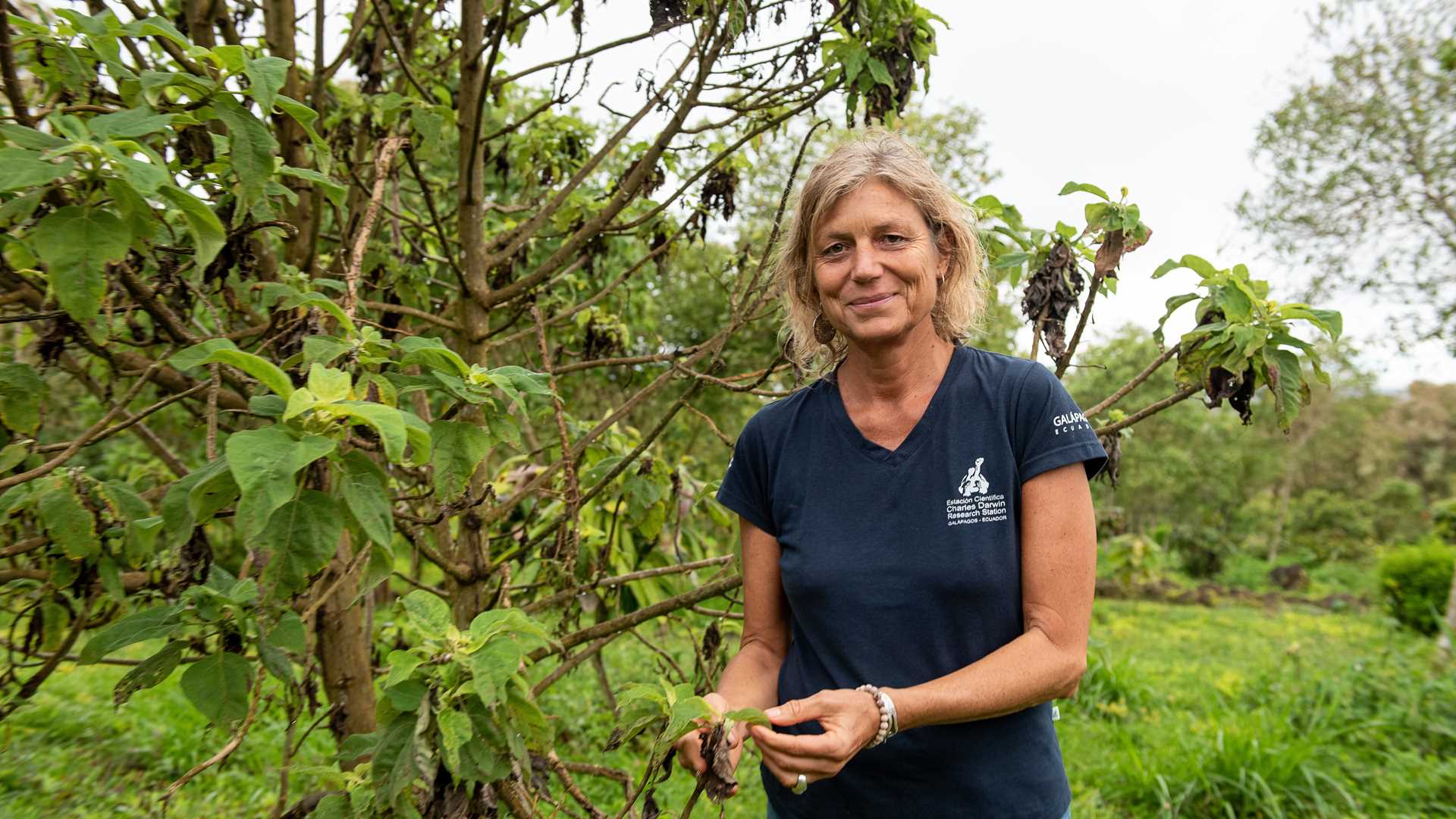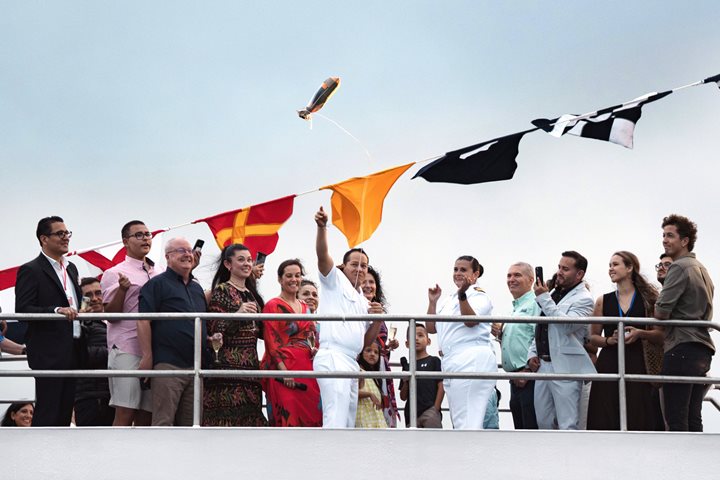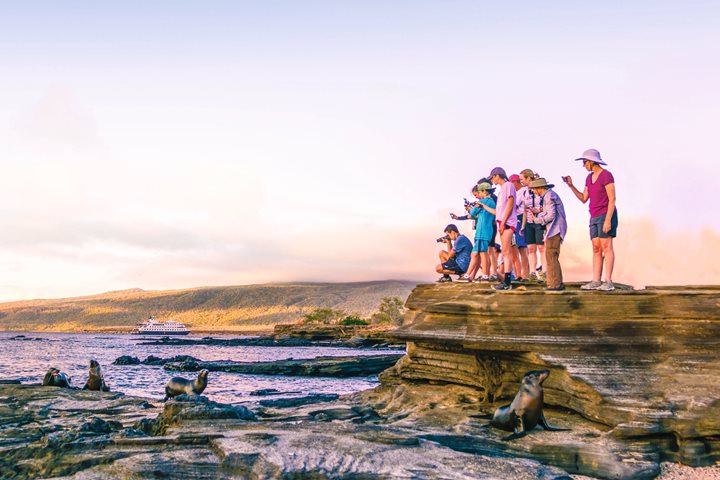Call +1.800.397.3348 or contact your travel advisor
- WorldView
- 4 Min Read
- 22 Feb 2019
60 Years of Science & Conservation in Galápagos

The mission of the Charles Darwin Foundation and its Research Station is to provide knowledge and assistance through scientific research and complementary action to ensure the conservation of the environment and biodiversity in the Galápagos Archipelago. Get Inspired By Photos, Videos, Webinars, Stories, And Exclusive Offers. Sign Up
A true gem in the crown of conservation and sustainability, the Charles Darwin Foundation (CDF) celebrated its Diamond Anniversary last year. The CDF has worked for six decades to protect this living laboratory and ensure that its pristine ecosystems and incredible biodiversity will continue to thrive for generations to come. The Foundation was established in 1959, the same year Ecuador declared Galápagos a national park on the centennial of Darwin’s seminal book, On the Origin of Species. Five years later the CDF opened the doors to its Research Station, which has been the main base of its scientific research on the islands ever since.
Archival photo of the Charles Darwin Foundation in 1960. Courtesy of the Charles Darwin Foundation.
Though the Charles Darwin Research Station is most often associated with breeding and rearing giant tortoises to help rebuild populations in the wild, the scope of their work goes way beyond. Over the years they have: investigated several species of sharks in the Darwin and Wolf Marine Sanctuary, home to the largest shark population on the planet; restored degraded ecosystems on several islands and promoted sustainable agricultural practices; examined the health of Galápagos penguins, waved albatrosses, and flightless cormorants endemic to the archipelago; and monitored the presence of invasive species in marine ecosystems and their transport within plastics carried by sea currents. Just a few of the many examples of their reach around the islands.
Volunteers for the Charles Darwin Foundation with iguanas in the 1970s. Courtesy of the Charles Darwin Foundation.
In celebration of the milestone the CDF planned a flurry of activities planned, including the recent addition of a new interpretative space in the Research Station’s exhibition hall—Darwin’s Corner was inaugurated there on February 12, 2019 just in time for Darwin’s Birthday.
In April last year, a sculpture made entirely of plastic collected from beach cleanups with the help of local students went on display in Puerto Ayora, Santa Cruz Island. Supported by the Lindblad Expeditions-National Geographic Artisan Fund, this project is part of a larger campaign to help educate both locals and visitors about the impact of plastics on our oceans.
In July, a Sciences Symposium together with Galápagos National Park was held in Puerto Ayora and featured Keynote Speakers Peter and Rosemary Grant, both world-renowned for their remarkable long-term studies of Darwin’s finches.
And in November, a film about the islands produced by Nature Conservation Films especially for the 60th anniversary celebration debuted.
Sea lions pose ashore with the National Geographic Endeavour II in the background.
Protecting these enchanted islands from threats like illegal fishing, climate change, and the introduction of invasive species is not just a mission for the CDF, but for us here at Lindblad as well. We have been an active partner in Galápagos conservation since the late 1960s when Lars-Eric Lindblad paid for the first park rangers, advocated for a park entrance fee, and funded early research on seabird conservation and tourism impact. Today, our guests have donated more than $8.7 million to important conservation, education, and research priorities in Galápagos, many of which have directly supported the CDF.
And many of our employees play a vital role in the Foundation too—from our CEO Sven Lindblad and Juan Flaim, Vice President of Expedition Development, who are Honorary Members of the Foundation’s General Assembly to Darrel Schoeling, our Director of Expedition Development, Ecuador & Peru, who is on the Board of Directors. Plus, several of our longtime naturalists—Paula Tagle, Cindy Manning, and Lynn Fowler—are all Governing Members of the General Assembly.
“I think that the Foundation is such an incredibly smart, incredibly enthusiastic, and incredibly knowledgeable group of people who have seen Galápagos from all sides and who are so enamored of it,” says Fowler. “It’s a really magical place full of surprises and even after going around for 40 years here I still see something amazing I’ve never seen before almost every single week. These islands just get under your skin and you realize they are a paradise on our planet that we absolutely must save to the best of our ability.”



